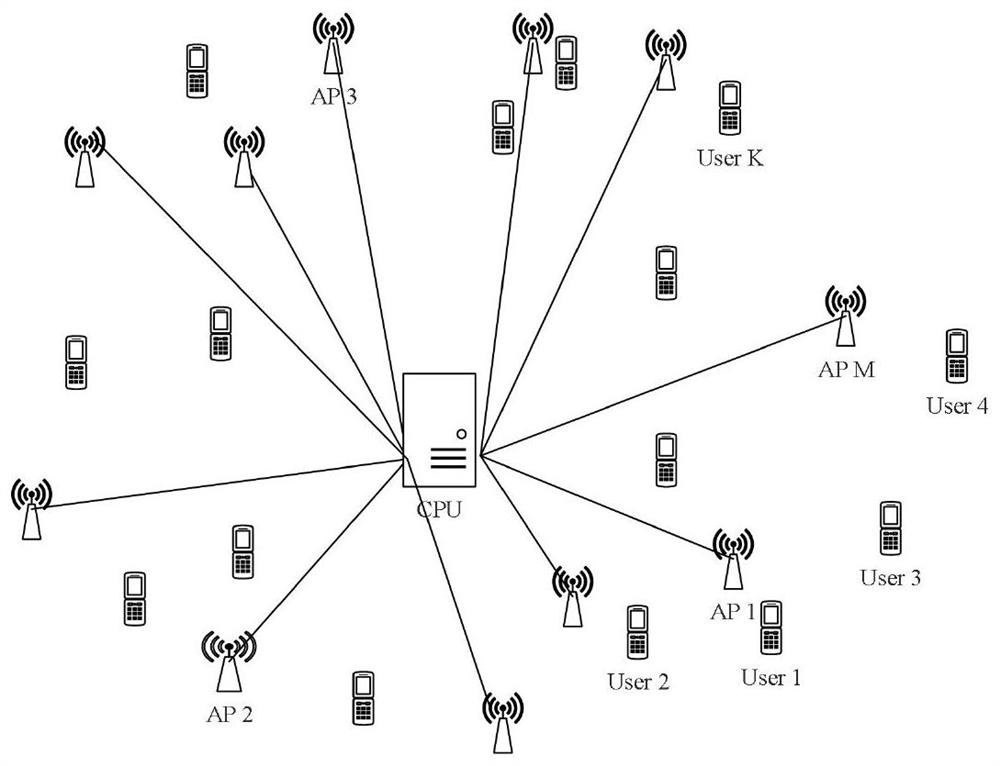AP selection method of cell-free large-scale antenna system
A large-scale antenna and cell technology, applied in radio transmission systems, diversity/multi-antenna systems, transmission systems, etc., can solve the problems that APs cannot accurately obtain channel state information, link influence, multiplexed pilots, etc., and achieve Effects of reducing pilot pollution, reducing bit error rate, and avoiding pilot pollution
- Summary
- Abstract
- Description
- Claims
- Application Information
AI Technical Summary
Problems solved by technology
Method used
Image
Examples
Embodiment 1
[0034] An AP selection algorithm for a large-scale antenna system without a cell of the present invention will be described below with reference to the accompanying drawings and in combination with preferred embodiments of the present invention.
[0035] Step 1: For a non-cell large-scale antenna system with M APs and K users, the number M of APs is far greater than the number K of users. The number of orthogonal pilots in the system is T, and T
[0036] Step 2: Each AP judges the user type according to the distance from the user. Here, user types are classified according to the threshold Th1 and the threshold Th2. Such as figure 1 and 2 As shown, d(AP 1 ,UE 1 )≤Th1,d(AP 1 ,UE 2 )≤Th1, then the first user User1 and the second user User2 are the first API users. Th11 ,UE 3 )1 ,UE 4 )≥Th2 means that the fourth user User4 is a Class III user of the first AP.
[0037] Step 3: For the Type I users of AP1, User1 an...
PUM
 Login to View More
Login to View More Abstract
Description
Claims
Application Information
 Login to View More
Login to View More - R&D
- Intellectual Property
- Life Sciences
- Materials
- Tech Scout
- Unparalleled Data Quality
- Higher Quality Content
- 60% Fewer Hallucinations
Browse by: Latest US Patents, China's latest patents, Technical Efficacy Thesaurus, Application Domain, Technology Topic, Popular Technical Reports.
© 2025 PatSnap. All rights reserved.Legal|Privacy policy|Modern Slavery Act Transparency Statement|Sitemap|About US| Contact US: help@patsnap.com


